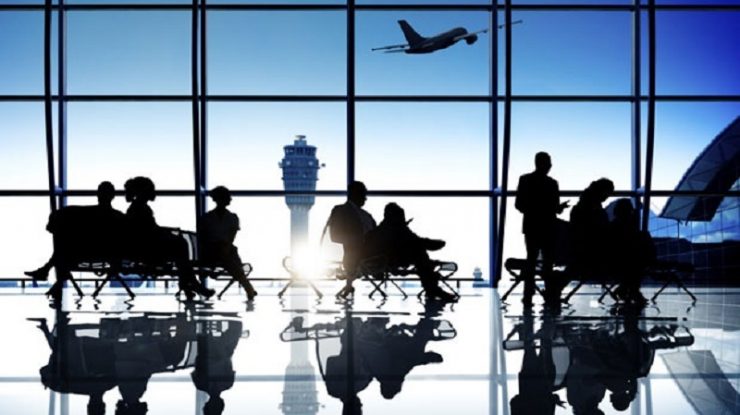THE MINISTRY of Transportation (Kemenhub) is currently deciding for 34 international airports in Indonesia. The evaluation is carried out by involving the relevant Ministries and Institutions.
According to the Director General of Air Transportation of the Ministry of Transportation, Maria Kristi Endah Murni, said the determination of international airports is currently still in the evaluation stage of the condition of 34 (existing) international airports.
This massive evaluation was carried out because there were several international airports that were considered to be operating less than optimally.
“The designation of international airports is currently still in the evaluation stage of the condition of 34 (existing) international airports by involving relevant Ministries and Institutions, and there are several airports that have not yet been operating optimally,” said Maria, Tuesday (8/08).
Responding to this, Aviation Observer Alvin Lie said, before the Covid-19 pandemic, Indonesia operated around 35 international airports. Of these, Alvin assessed that only 12 international airports were truly active serving regular flights every day.
“Other (international airports) only once or twice a week (international) flights. If not to Singapore, then to Kuala Lumpur,” said Alvin.
Alvin said what was even more concerning was that most international airport users were Indonesian passport holders, namely Indonesian citizens who wanted to go abroad. This means that the existence of the international airport only facilitates Indonesians going abroad, but does not bring foreigners to Indonesia.
“This is where the problem is that international airports are expensive to operate because they must have immigration, customs, quarantine, and other facilities, which of course are not cheap. Economically it does not produce for us because it does not bring in people from other countries, citizens of other countries come to Indonesia,” Alvin explained.
Alvin said, so far, many regular international flight destinations have only been to Singapore or Kuala Lumpur, Malaysia. This practically makes Singapore and Kuala Lumpur the gateways to various cities in Indonesia. In fact, the gateway to Indonesia should have been Indonesia directly. For example, direct flight routes to Denpasar, Jakarta, Makassar and other places in Indonesia.
According to him, such conditions are also detrimental to the national aviation industry where Indonesian airlines do not get a portion for their domestic transport.
“So, I support the government’s move to simplify international airports by simplifying the number to 12 (international airports), a maximum of 15 (international airports), that is for regular flights,” Alvin explained.
Even so, Alvin asked for an exception. For example, charter flights such as Umrah flights and international cargo flights must still be carried out at any airport as long as they are supported by adequate facilities at that airport.
“So international airports are generally simplified, but there are some exceptions for charter and Umrah, then for cargo as well,” Alvin remarked.
Previously, the Ministry of Transportation said the process of structuring the number of international airports was carried out to maintain the sustainability of the aviation industry.
How long the evaluation will be carried out cannot be conveyed by the Directorate General of Civil Aviation. Likewise, regarding the possibility of how many international airports will be cut, the Directorate General of Civil Aviation has not yet been able to convey.
Furthermore, the evaluation of the International Airport was carried out by considering the ASEAN Open Sky agreement, international passenger and international cargo traffic and the distribution of West and East Indonesia.
Furthermore, the Director General of Air Transportation of the Ministry of Transportation, Maria Kristi Endah Murni, said that the Ministry of Transportation would stipulate provisions for domestic airports that can serve flights to and from abroad without changing the airport’s status to international.
For example, for certain purposes such as State Events, International Events, Hajj and Umrah Embarkation and Debarkation, supporting national economic growth and disaster management.
“For example, yesterday Komodo Airport in Labuan Bajo, because there was an international ASEAN Summit event, could serve international flights, but every day it is a domestic airport,” he added.
For this matter, Maria said that currently the process for Draft Ministerial Regulations and Draft Ministerial Provisions related to the regulation of International Airports is in the process of being determined and promulgated.
For information, the 34 international airports in Indonesia that are being evaluated include Maimun Saleh Airport, Sabang (SBG), Sultan Iskandar Muda Airport, Aceh (BTJ), Kualanamu Airport, Medan (KNO), Sisingamangaraja XII Airport, Silangit (DTB), Sultan Syarif Kasim II Airport, Pekanbaru (PKU), Minangkabau Airport, Padang (PDG), Raja Haji Fisabilillah Airport, Tanjung Pinang (TNJ).
Next, Hang Nadim Airport, Batam (BTH), Sultan Mahmud Badaruddin Airport, Palembang (PLM), Raden Inten II Airport, Lampung (TKG), H.A.S Hanandjoeddin Airport, Tanjung Pandan (TJQ), Soekarno-Hatta Airport, Tangerang (CGK) , Halim Perdanakusumah Airport, Jakarta (HLP), Husein Sastranegara Airport, Bandung (BDO), Kertajati Airport, Majalengka (KJT).
Furthermore, Adi Sutjipto Airport, Yogyakarta (JOG), General Ahmad Yani Airport, Semarang (SRG), Adi Soemarmo Airport, Solo (SOC), Juanda Airport, Surabaya (SUB), Banyuwangi Airport, Banyuwangi (BWX), I Gusti Ngurah Airport Rai, Bali (DPS), Zainuddin Abdul Madjid Airport, Lombok (LOP). [sources/photo special]
















